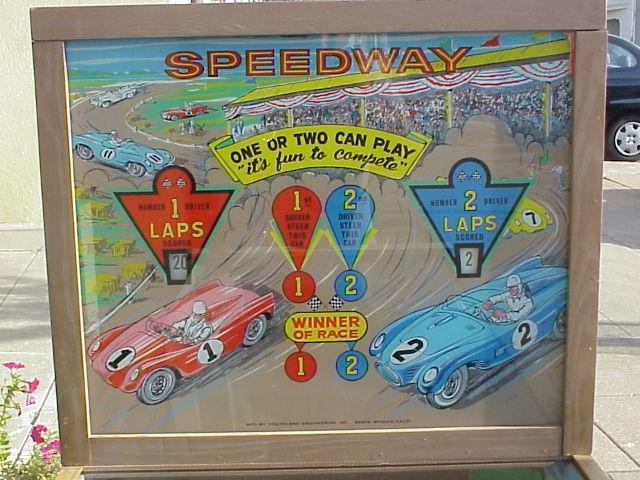
|
Description: Speedway, Southland Engineering, 9/63, two players, two small slot cars race around a figure-8 style slot car track inside a pinball cabinet, both players at the short side of the cabinet's rectangle (same player position as a pinball cabinet). Similar to Southland Engineering's Time Trials (6/63), and AMF's Little Indy and American Indy. Also ICE made a 1980s version called Turbo Drive.
If you have an original car for sale please let me know at
cfh@provide.net Each steering wheel run through a 'flanged' bronze bushing (3/4" O.D., 5/8" I.D., 1.25" in length), that are often worn or cracked. These will most likely need to be replaced. Hardware stores often sell a flanged bushing that is the right inside diameter (I.D.) and outside diameter (O.D.), but is too short in length. A solution is to use *two* of these shorter flanged bushings (one will need to be shortened slightly), installing one on each side of the control panel. Also the steering wheel switch activators are often missing. These is a 5/16" x 3.5" metal rods that run through the steering wheel shaft (and are secured with 1/4"-20 set screws), and butt up against two large rubber donuts (to limit how far the steering wheel turns). There is a centering spring mechanism which is also often broken too. The steering switches break very easily, due to the amount of use they get. Please contact me if you have this game for sale at cfh@provide.net
|
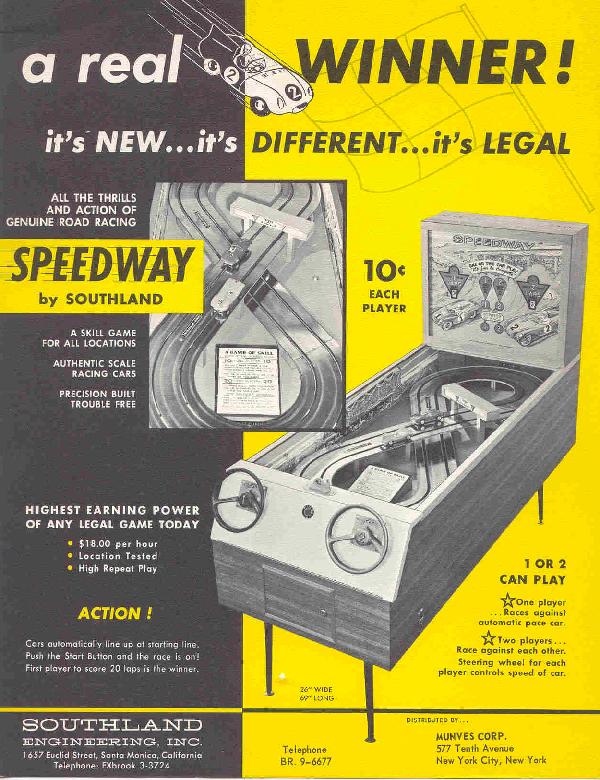

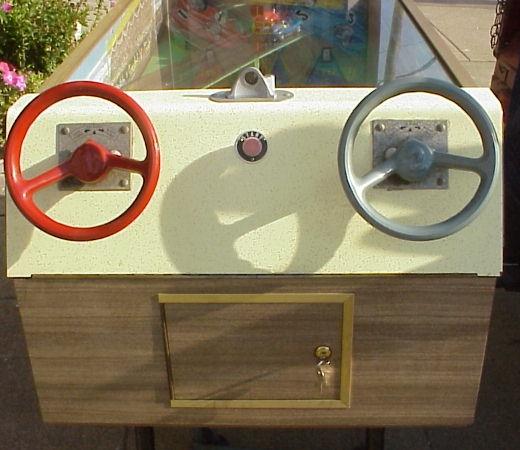
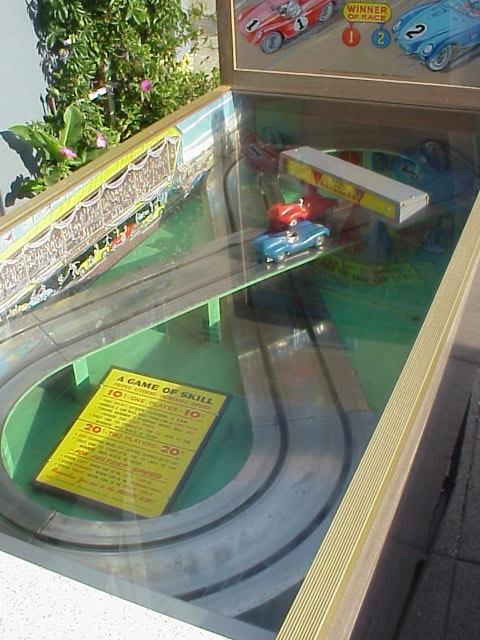
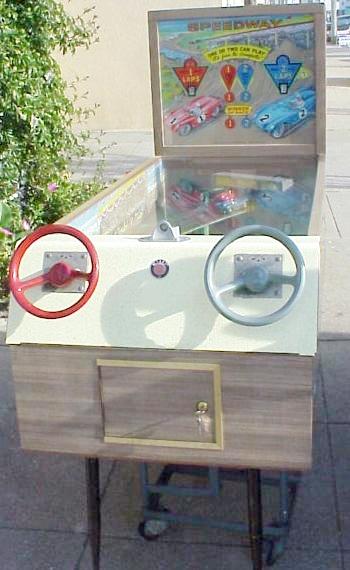
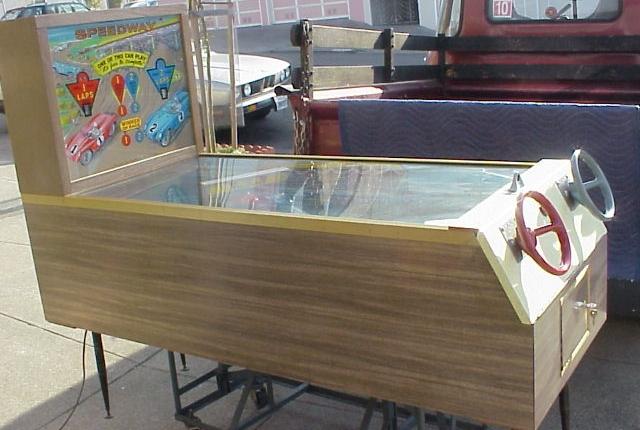
In the pictures below, the blue car appears to have the wrong body.
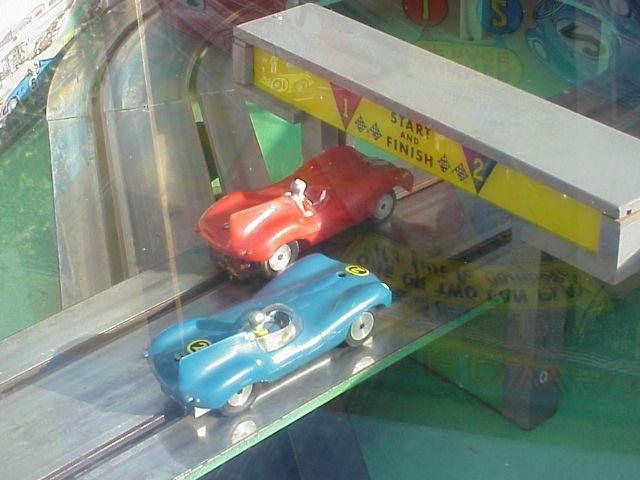
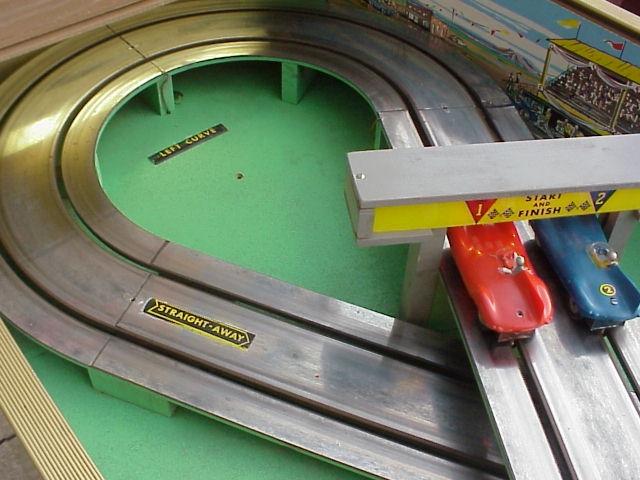
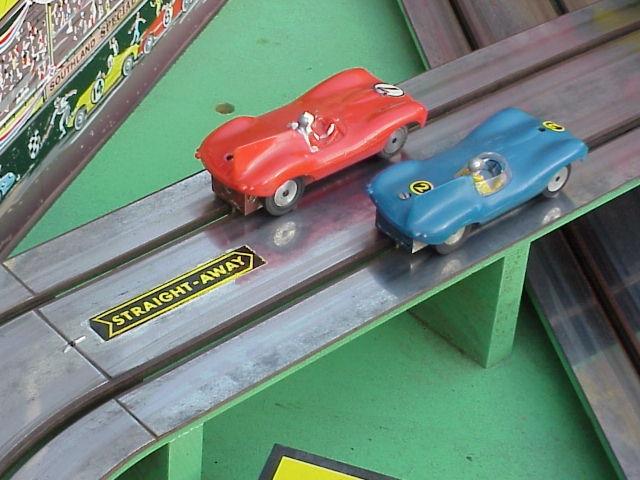
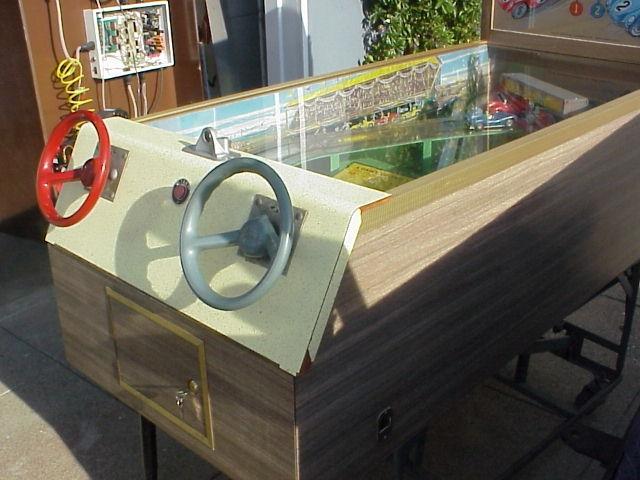
Early (1958-1962) versus newer Strombecker Type-D 1957 Jaguars. The red car
is the earlier "full cockpit"
model. The blue car is the mid-1960s
version.
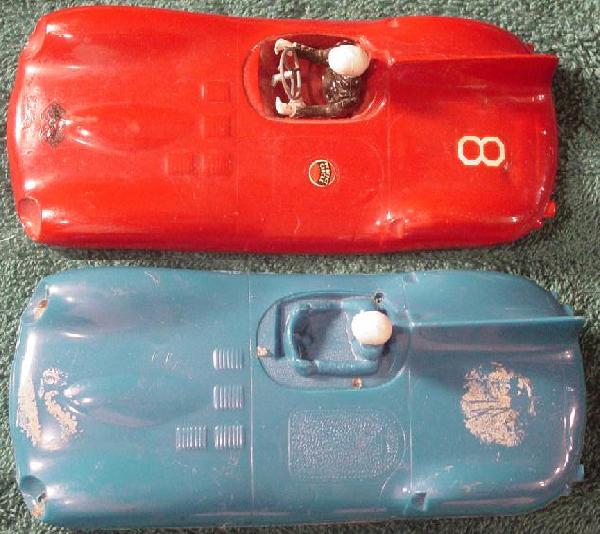
Early versus newer Strombecker Testa Rosa Ferraris. The top car
is the earlier "full cockpit" model, and
the lower car is again
the mid-1960s version.
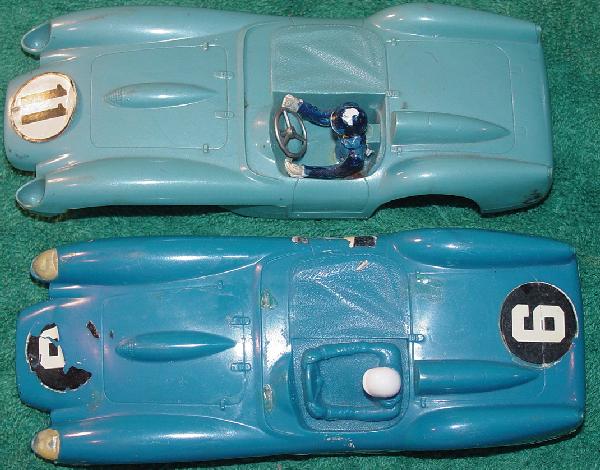
Here's a NOS 1960s Strombecker slot car kit with the exact cars used in the game.
Well that's not quite true... the motors and car chasis in this kit are consumer
quality, where the coin-op version is way more robust. The Speedway cars run at
24 volts DC and have 24 volt motors. But most Speedways operating today will need
the 24 volt system converted to 12 volts DC, as finding 24 volt motor parts is impossible.
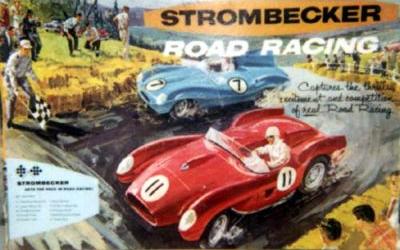
Here's an original Speedway car, converted to a 12 volt motor. The track stays are brass
and 3/16" diameter by 3/8" long, with a 1/2" diameter by 1/16" thick head, for a total length
of 7/16". There is one for the front and rear of the car, and they keep the car on the track.
Cars have 3" wheelbase, and the length of the metal chasis is 4 3/8" long by 5/8" tall by 1 1/8" wide.
The rear tires are 1" diameter with 5/16" wide tread. The front tires are 15/16" diameter with 5/16"
wide tread. Outside-to-outside tire width of car is 1 3/8". The 1/4" brushes are 5/8" apart center-to-center.
If you have an original car for sale please let me know!




|
* Email the collector cfh@provide.net * Go to the EM Arcade History index * Go to the Pinball Repair/History index |